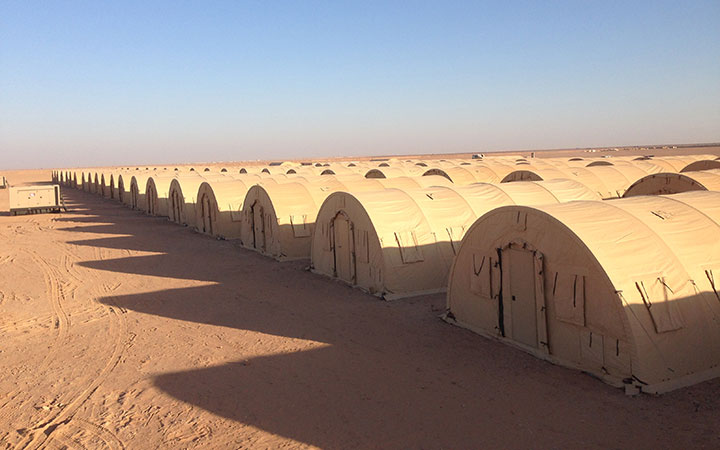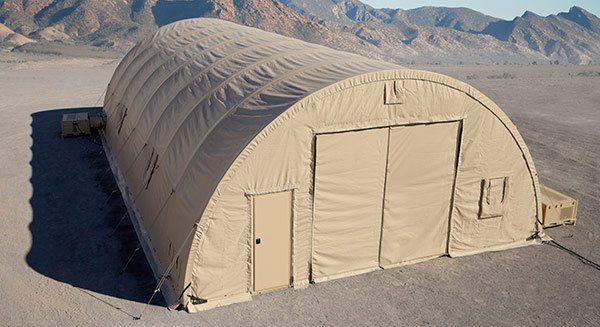Table of Contents
Resilient Building Practices in Extreme Environments: An Essential Guide
Extreme environments refer to places on Earth that are too inhospitable to support human — and, to some extent, animal — life. Some familiar examples include polar ice caps, deserts, and natural hot springs where waters are too hot for bathing.
Organisms that thrive in these environments are called extremophiles, which include microorganisms and some animals.
Construction projects in such places mainly consist of:
- Research facilities, like temporary or permanent ones in Antarctica
- Forward-operating bases (FOBs), like the ones used by foreign militaries in Afghanistan and Iraq, which can last for the duration of their operations
Whether temporary or permanent, such buildings should be built with resilience to local climates and accommodate crew comfort. This guide delves into the various types of extreme environments and best practices for erecting buildings in these places.
Extreme environment types
It’s unclear how much of Earth isn’t ideal for human settlement. However, one source estimates that about half of the globe is uninhabited, including mountains (24%) and deserts (33%). Scientists predict that these figures will remain the same until 2050 despite rapid urbanization.
With regard to terrestrial extreme environments, there are two classifications: temperature and potential of hydrogen (pH). Temperature is self-explanatory, pertaining to areas of extreme heat like the Sahara Desert and extreme cold like the Antarctic Plateau. Typical temperatures in these places are in excess of 40oC and below -5oC, respectively.
The pH level of an environment refers to its acidity or alkalinity. Acidic environments, such as the Danakil Depression in Ethiopia, maintain a pH level below 5. In contrast, alkaline environments, such as Lake Natron in Tanzania, maintain a pH level above 9. For comparison, the human body needs a pH level between 7.35 and 7.45 to work properly.
Some extreme environments feature more than one classification. For example, the hot springs of Yellowstone National Park in the U.S. vary wildly in temperature and pH levels, making them home to a diverse population of microorganisms.
The importance of climate control
The importance of climate control in deployable military shelter systems can’t be overlooked, especially for military camps in extreme environments. At the heart is the environmental control unit (ECU) — a portable climate control system designed to regulate humidity and pressure under temperature extremes.

ECUs are integrated into every form of shelter in a FOB and other military installations located in extreme environments.
Not only do they protect the people living and working in the shelters, but also the equipment. Important electronics aboard armored vehicles and aircraft can be rendered unusable under temperature highs and lows, putting soldiers in a firefight at risk.
Modularity and adaptability
Research stations across Antarctica’s vast ice sheet stand on multiple hydraulic stilts that can be adjusted as needed. For example, it’s possible to relocate an entire station to a different part of the ice sheet to continue research, if not seeking safer ground to do so.
The reasons for this design practice have a lot to do with Antarctica’s geological makeup and the unpredictability of its wilderness. Building on ice isn’t the same as building on solid earth.
Waste heat from the structure can risk melting the ice it stands on and cause it to come down. Frequent blizzards and glacier runoff also risk burying the structure under densely packed snow.
In a place where anything can be closer to reality than a mere possibility, designers have to consider the unpredictable. A striking example is the British Halley VI Research Station on the Brunt Ice Shelf which prepares for such eventualities by making its transportable modules stand on hydraulic stilts. The vertical clearance mitigates the risk of being buried in snow.
Modular construction makes sense in cases like these, as extreme weather prevents any long-term construction effort. The modules are built in their home country before being transported all the way to Antarctica, where all that’s left is assembly.
In the unforgiving, blizzard-prone expanse of the Antarctic, research stations often grapple with prolonged periods of scarcity, underlined by intermittent resupply opportunities.
Supply shortages may include diesel for their generators and power plants. Because of this, researchers have learned to harness renewable energy for their needs.
Among the most prominent examples is the wind farm on Ross Island, one of the few places in Antarctica with ice-free ground. Three wind turbines — modified to work in the continent’s climate — generate enough energy to power two research stations: New Zealand’s Scott Base and the U.S. McMurdo Station. They’ve managed to reduce fuel consumption and greenhouse gas emissions substantially.
Conclusion
Whether for research or military operations, construction in extreme environments requires at least three things: effective climate control, modular design, and ease of adaptability to local conditions.
These structures may not become a permanent lasting monument in the landscape, but they must demonstrate a durability capable of satisfying the needs of their temporary residents.





